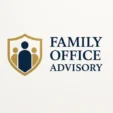Family Office Technology Architecture #
Family office technology architecture defines the systems, tools, integrations, and governance required to support investment management, reporting, communication, security, and administrative operations. A well-designed architecture increases efficiency, reduces risk, strengthens cybersecurity, and enables scalability—particularly important as families grow and their needs become more complex.
Context & Importance #
Families typically operate across jurisdictions, banking partners, asset managers, legal structures, and generations. Without a coordinated technology stack, data becomes fragmented, security vulnerabilities emerge, and reporting becomes inconsistent or manual. Technology architecture ensures that all components—data, applications, devices, and third-party providers—work together securely and efficiently.
Core Components of a Technology Architecture #
A modern family office typically includes the following technology layers:
- Data layer: Custodial feeds, document repositories, APIs, data lakes, and reconciliation engines.
- Application layer: Portfolio management systems, accounting platforms, reporting tools, CRM systems, and communication platforms.
- Integration layer: APIs, ETL workflows, and middleware to synchronize data across systems.
- Security layer: Identity management, multi-factor authentication, encryption, endpoint protection, and vendor risk controls.
- Device layer: Laptops, mobile devices, secure messaging tools, and access permissions.
- Governance layer: Policies, procedures, cybersecurity standards, and audit trails.
System Categories #
The technology stack generally includes several specialized systems that work in an integrated environment:
- Portfolio Management System (PMS): Tracks holdings, valuations, performance, and risk analytics.
- General Ledger & Accounting: Enables consolidated accounting across trusts, companies, and entities.
- Customer Relationship Management (CRM): Centralizes contacts, advisors, documents, and communication logs.
- Document Management System (DMS): Provides secure, searchable storage for contracts, legal documents, and statements.
- Reporting & Analytics: Dashboards for net worth, performance, allocations, and liquidity.
- Cash & Treasury Systems: Manage payments, cash positions, and capital call workflows.
- Cybersecurity Tools: Monitoring platforms, endpoint protection, and threat intelligence.
- Communication Tools: Secure messaging, encrypted email, and collaboration platforms.
Data Integration & Workflow Automation #
Integration is essential to avoid manual processes, reduce errors, and create real-time visibility.
- Custodial data feeds: Automated daily updates of transactions, positions, and valuations.
- APIs & middleware: Used to connect PMS, reporting systems, and accounting tools.
- Workflow automation: Streamlines approvals, reporting cycles, and document management.
- Data normalization: Standardizes data formats across custodians and asset classes.
- AI-enabled automation: Enhances reconciliation, forecasting, and document classification.
Cybersecurity Architecture #
Cybersecurity is a foundational element given the sensitivity and complexity of family data. A layered security model protects people, devices, data, and systems.
- Identity & access management: Multi-factor authentication, role-based access, password management.
- Network protection: Firewalls, VPNs, intrusion detection systems, and secure Wi-Fi configurations.
- Endpoint security: Anti-malware, mobile device management, and device encryption.
- Data protection: Encryption at rest and in transit, data loss prevention, and secure backups.
- Vendor risk management: Due diligence, SOC reports, and ongoing monitoring.
- Incident response: Cyber recovery plans, backup strategies, and crisis communication protocols.
Implementation & Best Practices #
- Build a technology roadmap: Align technology upgrades with strategic and operational priorities.
- Choose scalable systems: Ensure systems can support future complexity, new asset classes, and additional entities.
- Prioritize cybersecurity: Make security a core design requirement, not an add-on.
- Adopt cloud-first solutions: Improve accessibility, resilience, and scalability while maintaining strict security controls.
- Ensure vendor interoperability: Select systems with strong APIs and integration capabilities.
- Provide user training: Equip staff and family members to use tools securely and effectively.
- Conduct regular audits: Validate system performance, security posture, and data accuracy.
- Document everything: Architecture diagrams, workflows, policies, and procedures.
Common Challenges #
- Fragmented systems with poor integration.
- Manual data entry creating errors and inefficiency.
- Cybersecurity vulnerabilities across devices or vendors.
- Lack of standardized reporting across custodians.
- Legacy systems not suited for multi-entity structures.
- Insufficient documentation of workflows and control points.
- Overreliance on a single IT provider without adequate oversight.
See Also #
- Cybersecurity & Data Privacy Controls
- Wealth Reporting & Performance Analytics
- Vendor Management & Outsourcing Strategy
- Family Office Operations
- Risk Management & Reporting




